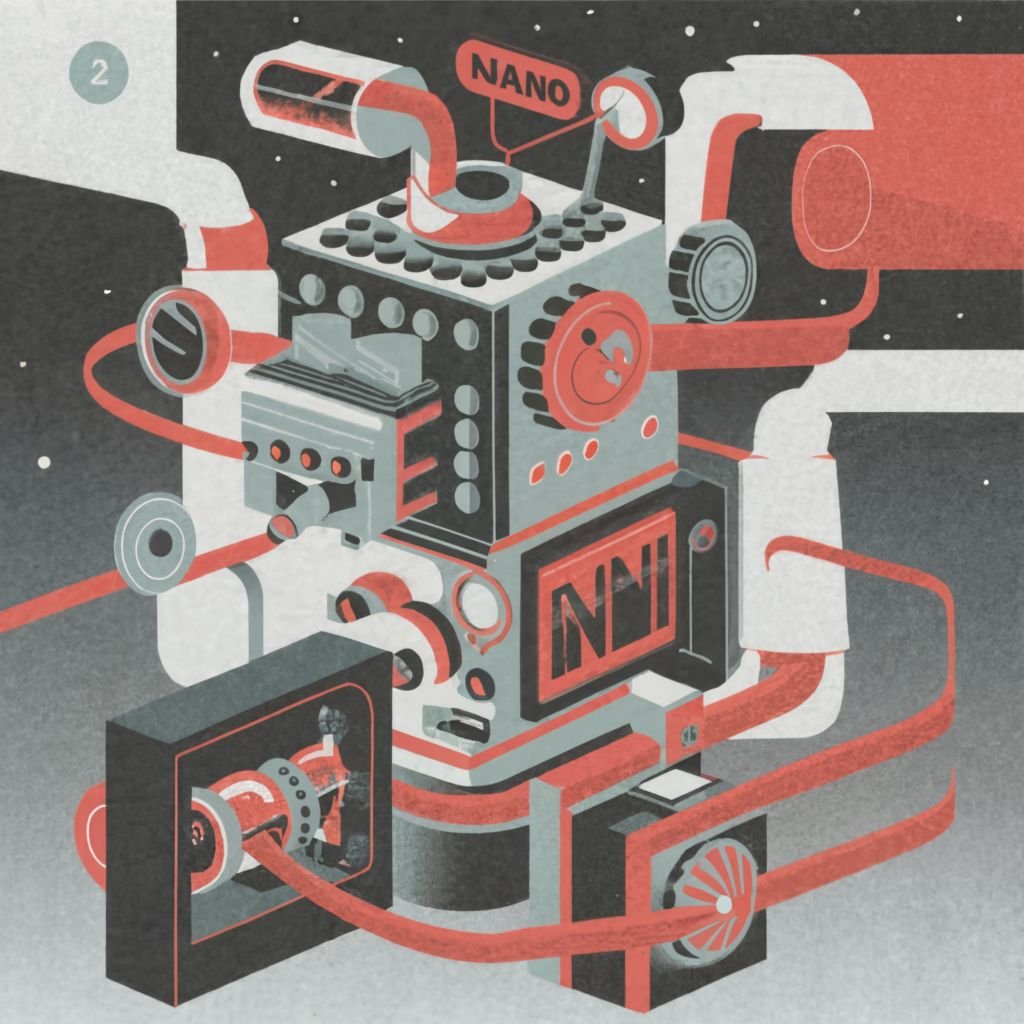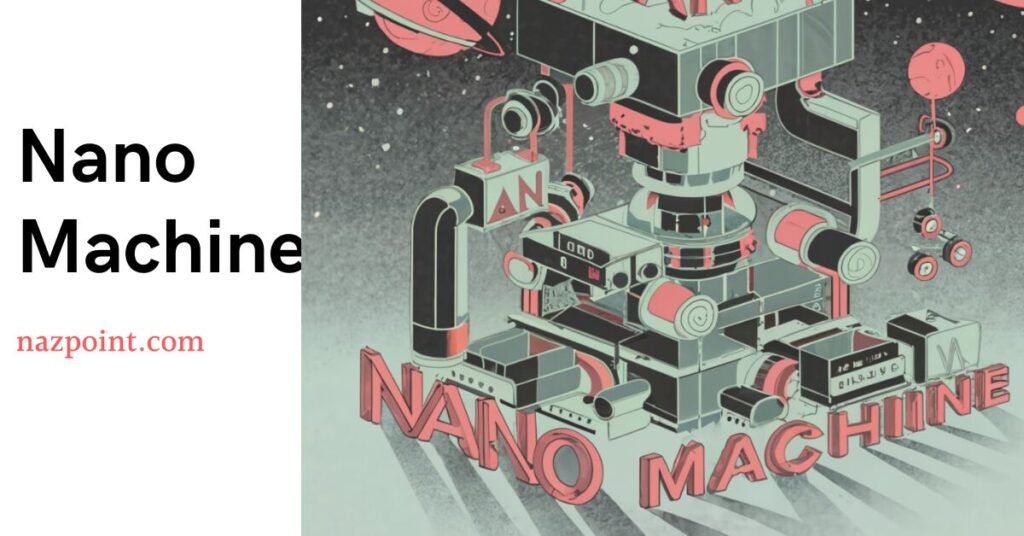In this revolutionary period of scientific advancements, a nano machine stands out as a leading development at the frontier of innovation. This minuscule device, operating at the nanoscale level, has the potential to revolutionize various industries, offering unprecedented opportunities in medicine, electronics, and beyond. This article will uncover the potential, applications, and future impact of these microscopic wonders, revolutionizing fields from medicine to technology.
What is a Nano Machine?
At the heart of the nano machine revolution lies the ability to manipulate matter at the atomic and molecular levels. Nano machines are tiny devices designed to perform specific tasks with precision, often mimicking the functions of larger systems. Ranging from synthetic molecules to biological entities, these machines open up new possibilities for scientific exploration.
Who invented Nano Machine Technology?
The development of nanomachine technology, much like nanotechnology in general, is a collaborative effort involving contributions from various scientists and researchers over time. It doesn’t have a single inventor. The concept of nanomachine has roots in the work of pioneers in nanotechnology, such as Richard Feynman, Eric Drexler, and Norio Taniguchi.
The term “nanomachine” or “nanite” is often used to describe tiny mechanical or electromechanical devices at the nanoscale. Specific inventions and breakthroughs related to nanomachines have been made by researchers in diverse fields, including chemistry, physics, and engineering.
It’s essential to note that the development of nanomachine is an ongoing process, and various scientists and research groups worldwide continue to make significant contributions to this evolving field.
Is Nano machine real?
Nanomachines are tiny devices that scientists are working on. They’re not as amazing as in stories yet, but they’re exciting for research. Scientists are using nanotechnology to make really small devices. These little things could be used in medicine, electronics, and helping the environment. It’s like an adventure to understand and use nanomachines better, making new things and discovering what’s possible on a super tiny scale.
Nano Machine Designs: Materials and Structures
Nano machine comes in diverse forms, utilizing a variety of materials and structures. From synthetic nanomaterials like carbon nanotubes to bio-inspired designs utilizing proteins and DNA, researchers are crafting these machines to meet specific needs. Understanding the fundamental building blocks is crucial to know their potential across different domains.
Nanomachine, or nanite, is an extremely small mechanical or electromechanical device designed to operate at the nanoscale, typically with dimensions measured in nanometers. These tiny machines have the potential to perform various tasks with precision, and their applications span across multiple fields.
Nano machine in humans
One of the most promising frontiers for nano machines is in the field of medicine. Nanobots, a type of nano machine, could be deployed within the human body for targeted drug delivery, precision surgery, and even disease detection at the cellular level. This section explores the potential of nano machines to revolutionize healthcare, providing personalized and minimally invasive solutions.
Drug Delivery:
Nanomachines could be designed to deliver medications precisely to targeted cells or tissues, minimizing side effects and improving therapeutic outcomes.
Disease Detection:
Nanomachines may serve as diagnostic tools, detecting biomarkers associated with diseases at an early stage, allowing for timely intervention.
Surgery:
Nanorobots might assist in performing minimally invasive surgeries at the cellular or molecular level, offering greater precision and reducing the invasiveness of traditional procedures.
Health Monitoring:
Nanomachines could continuously monitor health parameters, providing real-time data for proactive healthcare management.
Tissue Repair:
Nanomachines might contribute to the regeneration and repair of damaged tissues by facilitating controlled interventions at the cellular level.

Applications of Nano Machine Technology
1. Electronics:
Nano-Electromechanical Systems (NEMS):
A Nanomachine can be integrated into electronic devices at the nanoscale. It may serve functions such as sensors, switches, or actuators, contributing to the development of more efficient and compact electronic components.
Data Storage:
A Nanomachine may play a role in the development of advanced data storage systems by manipulating individual atoms for increased storage density.
2. Environmental Applications:
Water Purification:
A Nanomachine can be utilized for efficient water purification, removing contaminants at the molecular level.
Environmental Monitoring:
A Nanomachine may function as sensors for monitoring environmental conditions, enabling real-time data collection for pollution detection or climate studies.
3. Material Science:
Self-Healing Materials:
A Nanomachine could be integrated into materials to enable self-repair mechanisms. It might repair damage at the molecular level, extending the lifespan of materials.
Nano-Manufacturing:
A Nanomachine may contribute to precise manufacturing processes, enabling the creation of materials with specific properties at the nanoscale.
4. Robotics:
Microscopic Robotics:
A Nanomachine with robotic capabilities could perform tasks in confined spaces, such as inside the human body or in intricate machinery where traditional tools might be impractical.
5. Energy:
Energy Harvesting:
A Nanomachine could be designed to harvest energy at the nanoscale, contributing to the development of more efficient energy systems.
6. Electronics
In the field of electronics, a nano machine plays a signifiant role in enhancing the capabilities of devices. From nano-scale transistors to memory storage, researchers are exploring ways to leverage these tiny devices to create more efficient and powerful electronic components. The integration of nano machines could pave the way for the development of ultra-fast and energy-efficient electronics.
7. Environmental Applications
A Nano machine also holds promise in addressing environmental challenges. It can be employed for efficient water purification, air filtration, and soil remediation. Exploring the environmentally conscious applications of nano machines highlights their potential contribution to sustainable practices and the mitigation of ecological issues.
It’s important to note that many of these applications are still in the research and development stage, and challenges such as toxicity, stability, and ethical considerations need to be addressed for widespread practical use. The field of nanomachines continues to evolve, offering exciting possibilities for the future of technology and various industries.
What is a Nano Machine in Metal Gear?
In the Metal Gear video game series, particularly in the game “Metal Gear Solid,” a nanomachine is a key element of the storyline and gameplay. The nanomachine, often referred to as the “Nanomachine System” or “Nanomachine Network,” is a fictional technology that plays a crucial role in the game’s narrative.
In the Metal Gear Solid universe, nanomachines are microscopic, self-replicating machines that are injected into the bloodstream of soldiers. These nanomachines serve various functions, including:
1. Sensory Enhancement:
Nanomachines enhance a soldier’s sensory perception, providing them with heightened reflexes, improved vision, and increased awareness of their surroundings.
2. Communication:
The nanomachine network allows for seamless communication between soldiers and their commanding officers. It facilitates the exchange of information and mission updates in real-time.
3. Mind Control and Manipulation:
Nanomachines are used to control and manipulate the thoughts and actions of individuals. In the context of the game, this is often a plot device that adds complexity to the characters and storyline.
4. Healing and Recovery:
Nanomachines can aid in the rapid healing of injuries. They can repair and regenerate damaged tissues, allowing soldiers to recover quickly from wounds sustained in combat.
5. Virus and Disease Suppression:
The nanomachines in Metal Gear Solid are designed to suppress the effects of harmful viruses and diseases, providing soldiers with enhanced resistance to biological threats.
What is the weakness of nanomachine?
Since the concept of nanomachines is still in its early stages, real-world nanotechnology does not exhibit the fantastical capabilities often seen in fiction. Nevertheless, for fictional narratives or hypothetical scenarios, here are some common weaknesses attributed to nanomachines:
1.Vulnerability to Hacking or Malfunction:
In many fictional works, nanomachines are portrayed as susceptible to hacking or malfunction. If an external entity gains control over the nanomachines, they can be turned against their host or reprogrammed for malicious purposes.
2.Limited Power Source:
Nanomachines may have a limited power source, requiring periodic recharging or replacement. This weakness could make them susceptible to depletion during critical moments.
3.Environmental Sensitivity:
Nanomachines might be sensitive to certain environmental conditions, such as extreme temperatures, radiation, or chemical exposures. Harsh environments could compromise their functionality.
4.Biological Compatibility Issues:
If nanomachines are used within biological organisms, there could be issues of compatibility and rejection. The host’s immune system might recognize the nanomachines as foreign bodies, leading to immune responses or rejection.
5.Dependency and Addiction:
If nanomachines are used for enhancements, characters in fiction might become dependent on them. Withdrawal symptoms or the need for a constant supply could be portrayed as a weakness.
6.Cost and Accessibility:
Nanomachines in fiction might be portrayed as expensive or difficult to produce, limiting their widespread availability. This could create socio-economic disparities in access to advanced technology.
It’s important to emphasize that these weaknesses are fictional and speculative. In reality, the development of nanotechnology faces challenges related to safety, ethical considerations, and controlled manipulation at the nanoscale, but these are distinct from the exaggerated weaknesses often portrayed in fiction.
Future Perspectives
As technology advances, the future of nano machines holds exciting possibilities. This section explores emerging trends, such as self-replicating nano machines, enhanced artificial intelligence integration, and the convergence of nanotechnology with other fields. By envisioning the future, we gain insight into the transformative impact nano machines may have on society.
Conclusion
In conclusion, nano machines represent a fascinating frontier in science and technology, promising to reshape the way we approach medicine, electronics, and environmental challenges. As researchers continue to unlock their potential and overcome challenges, the journey into the microscopic world of nano machines opens doors to a future where the unimaginable becomes reality.
Frequently Asked Questions
1. How are nanomachines powered?
Nanomachines can be powered through various means, including external energy sources, chemical reactions, or by harvesting energy from their surroundings. The power source depends on the specific design and intended application of the nanomachine.
2. What are the potential medical applications of nanomachines?
In medicine, nanomachines hold promise for targeted drug delivery, precise surgery at the cellular level, disease detection, and health monitoring. They can potentially revolutionize healthcare by providing more effective and minimally invasive treatments.
3. Are there any safety concerns associated with nanomachines?
Yes, safety is a significant consideration. Researchers are actively addressing concerns such as biocompatibility, potential toxicity, and unintended side effects. Ethical considerations also play a role in ensuring responsible development and deployment of nanomachines.
4. What happens in a nano machine?
Nanomachines perform diverse tasks at the microscopic level, from delivering drugs with precision to targeted surgery, diagnostics, environmental applications, and enhancing electronics. Their potential spans medicine, environmental science, and materials, driving innovation in these fields. Ethical considerations and safety are crucial in their ongoing development.
5. How close are we to seeing practical applications of nanomachines in everyday life?
While research on nanomachines is advancing rapidly, practical applications in everyday life are still in the early stages. Significant progress has been made in laboratories, but challenges, including safety, scalability, and regulatory considerations, need to be addressed before widespread implementation in various industries.




Nice one
Your point of view caught my eye and was very interesting. Thanks. I have a question for you.
Stay in touch for more updates. Please follow https://nazpoint.com/ for related content and more collaboration